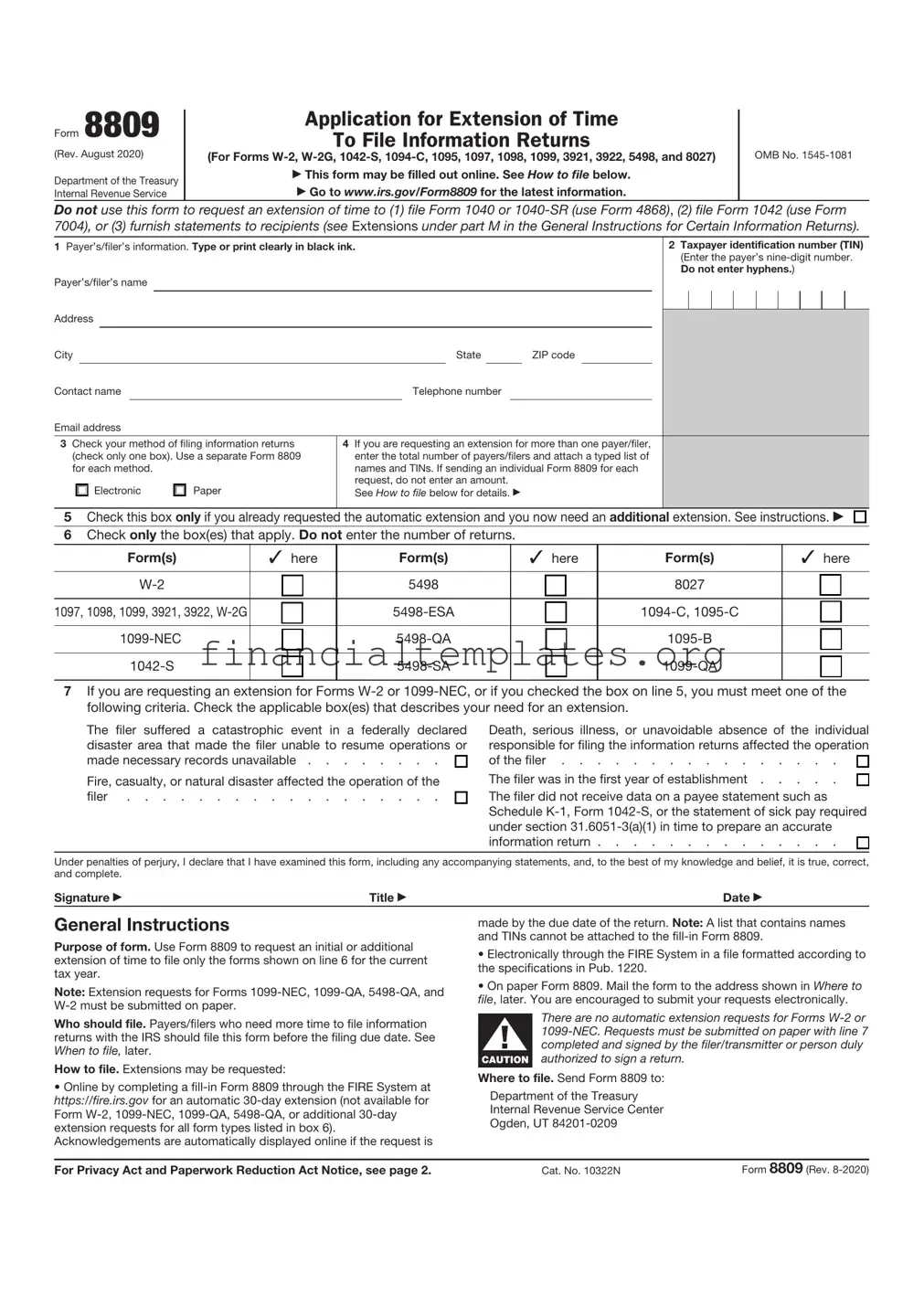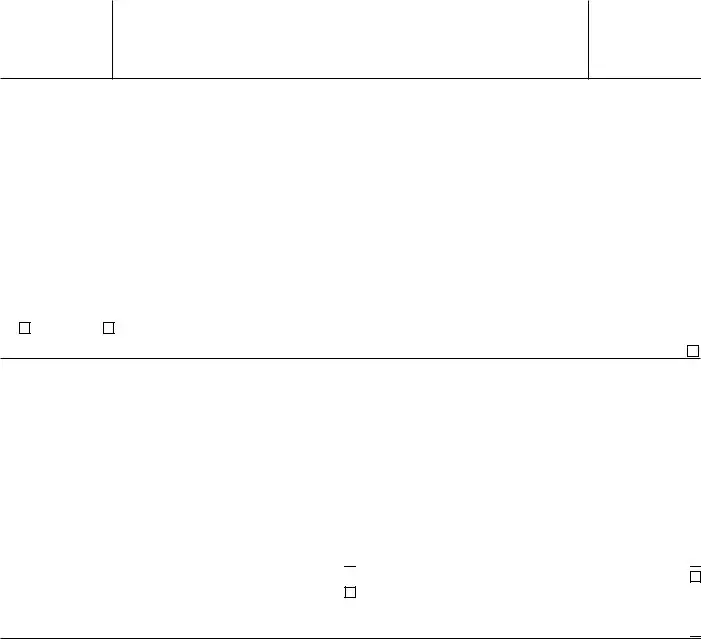The IRS 8809 form, used for requesting an extension of time to file information returns, shares similarities with several other documents used in tax and employment administration. Notably, it aligns with the W-9 form, which individuals and entities use to provide their taxpayer identification number to entities that will pay them income. Both forms are integral to the proper reporting and documentation of financial information to the IRS, ensuring compliance with federal tax laws and regulations.
Equally, the IRS 4868 form, which taxpayers use to request an extension of time to file their individual tax returns, bears resemblance to the 8809 form. While the 4868 pertains to individual income tax returns and the 8809 addresses information returns, both serve the crucial function of granting additional time to fulfill tax filing obligations, thereby preventing penalties for late submissions.
Another document, the Form 7004, is used by businesses, trusts, and estates to request an extension for filing their tax returns. Similar to the 8809 form, the 7004 is pivotal for entities that need more time to compile their financial information accurately. Both forms help in avoiding the repercussions of late filings by officially extending submission deadlines.
The W-2 form, although primarily a wage and tax statement provided by employers to their employees, correlates with the 8809 form in its role in annual tax documentation. Employers who find themselves unable to furnish W-2 forms to their employees by the deadline may use Form 8809 to seek an extension, highlighting the interconnectedness of these documents in managing tax reporting responsibilities.
Similarly, the 1099 series, which encompasses various forms reporting non-employee compensation, dividends, and other income payments, aligns with the 8809 form. Entities required to issue 1099 forms can file Form 8809 when they need more time to ensure accurate and thorough reporting, mirroring the extension request process for information returns.
The IRS Form 945, used to report withheld federal income tax from nonpayroll items, shares a functional similarity with the 8809 in that timely and accurate reporting is crucial. When entities require more time to report amounts withheld, submitting form 8809 can extend their filing deadline, emphasizing the importance of precision in tax documentation across different contexts.
The Form 940, which employers use to report annual Federal Unemployment Tax Act (FUTA) tax, also ties into the necessity for extensions that the 8809 form facilitates. Businesses that are not ready to file Form 940 by the deadline can request an extension through Form 8809, ensuring they remain compliant while compiling their FUTA tax information.
Form 941, required for reporting quarterly payroll taxes, can present challenges in meeting filing deadlines, similar to the circumstances surrounding the 8809 form. Employers who are unable to prepare their 941 submissions in time have the option to file Form 8809 to gain additional time, underlining the form’s essential role in maintaining tax filing compliance.
The Schedule K-1 (Form 1065), which partners in partnerships use to report their share of the partnership's income, deductions, and credits, interacts with the 8809 form in the context of deadlines. Partnerships that require more time to distribute Schedule K-1s accurately to all partners can leverage Form 8809 to extend their filing period, ensuring fair and precise allocation of tax responsibilities among partners.
Last but not least, the Affordable Care Act (ACA) reporting forms (1094 and 1095 series), which detail health insurance coverage offered and provided by employers, match the 8809 form in utility. Employers needing additional time to gather and report this information accurately can file Form 8809, underscoring the document’s significance in facilitating comprehensive healthcare reporting to meet federal requirements.







